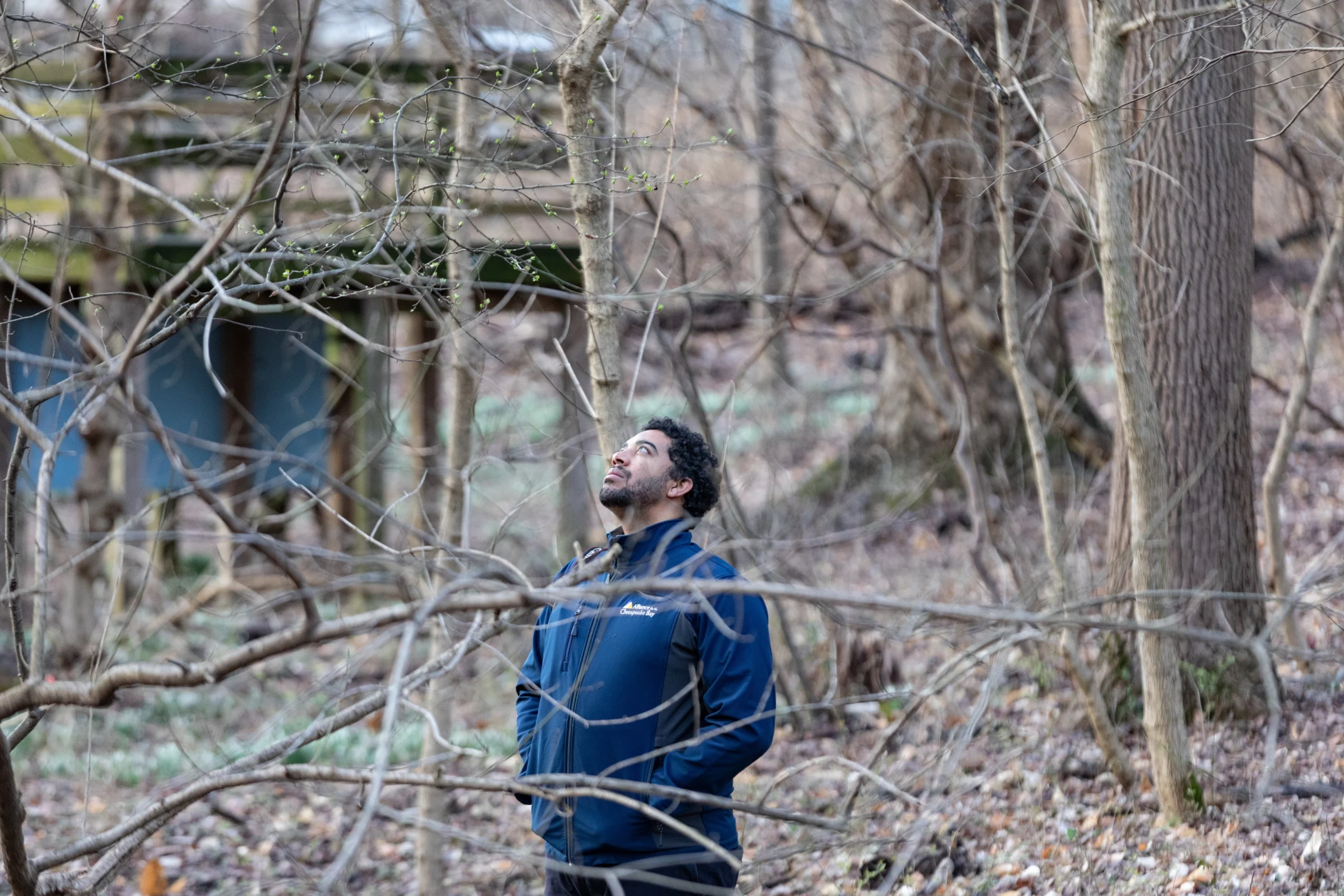This is the first in a series introducing ANS’ new Conservation Advocacy Priority Campaign Areas.
As world renowned conservationist and ANS Board Member Rachel Carson wrote, “Like the resource it seeks to protect, wildlife conservation must be dynamic, changing as conditions change, seeking always to become more effective.” Things have changed since 1897. The “low-hanging fruit” of conservation has been plucked. And the challenges facing humans in 2020, particularly climate change, endanger everything we have worked to protect for over 120 years. The threats and impacts of climate change are inextricably tied to the hazards facing vulnerable human and wildlife populations in our region. In severity, scope, and urgency, the climate crisis is a fight like no other the environmental movement has experienced.
Changing rainfall patterns in the region are already leading to extreme floods that scour out valleys, knock down trees, and devastate communities. Extreme summer heat waves and nights that no longer cool off dry out our wetlands, stress native trees and plants, and result in illness and death from heat exhaustion. These threats are particularly potent for vulnerable populations such as outdoor workers, those who live with minimal tree canopy coverage, and those experiencing homelessness. Warmer winters with fewer very cold nights mean more pest insects survive and thrive, spreading diseases like Lyme and Zika and overwhelming native plant populations. All these changes create openings for aggressive invasive species to expand into native ecosystems, making it more difficult for local biodiversity to thrive. As these changes intensify, our drinking water sources will be put under greater stress. Our built infrastructure will erode more quickly. Our coastal regions will flood more frequently and in many places disappear under rising seas.
These changes are already here and are affecting us all, right now; virtually every reputable scientific study indicates that they will continue to worsen. We must slow the rate of global warming, adapt to the impacts that are already upon us, and prepare our own human and wildlife communities to be ready, resilient, and responsive to these changes so we can continue to live prosperous lives supported by healthy ecosystems.
Much of ANS’s work over past decades sets the foundation for what we must continue to do: protect habitat patches and ensure they are connected, expose people to the value of nature so that they will work to protect it, and protect our watersheds, rivers, and the Chesapeake Bay.
However, climate change is woven even further into the fabric of our lives than this. It threatens bird populations and other animal and plant species both here and elsewhere in their ranges. It causes real harm, now, especially to marginalized, vulnerable, and diverse natural and human populations and communities in the region. It looms over the futures of the thousands of children we educate in and out of school every year.
Solutions to the climate crisis, especially at the local level, will protect nature and people alike. Increased access to and use of public transit, cycling, walking, and other transportation options can reduce net greenhouse gas emissions. Affordable housing developments near transit locations that provide access to jobs can help reduce sprawl into our remaining green spaces. Joining with those most impacted by climate change, such as under resourced, lower income, and immigrant communities, in safeguarding nearby natural areas can help ensure a healthy future for all families. The very same strategies that can help safeguard public health in a time of climate crisis, such as planting more street trees, also provide oases of habitat for pollinators and wildlife that need a respite in a hotter time.
Recognizing this, and the complexities that fighting climate change brings to the already-challenging arena of trying to conserve nature in a growing region, ANS assembled a Task Force of current and former Board members, Advocacy staff, and outside experts (see the next post in this series for more about the Task Force). The Task Force considered our mission, history, membership, partnerships, commitment to IDEA (Inclusion, Diversity, Equity, and Accessibility), and the facts and predictions of climate change. They helped us develop, and in April the Board of Directors adopted, a new set of four Priority Campaign Areas:
- Human Health & Access to Nature: All people live in nature. A healthy natural environment is one that includes healthy people who have clean air to breathe, clean water to drink, and safe places to be active and explore nature. ANS supports local environmental justice advocates, campaigns, and policies that intersect with our conservation priorities. Check out our support for critical equity and health funding in regional budgets.
- Biodiversity & Habitats: The stream valley corridors that knit our region together with ribbons of blue and green space are critically important in protecting clean drinking water, habitat for fish, birds, insects, and amphibians, and migratory corridors for our wildlife. Our science-based advocacy emphasizes resilience, connectivity, and networks of habitats in order to give our native wildlife the best possible chance in the face of a changing climate. Check out our advocacy for a cleaner Anacostia River.
- Climate Crisis: We combat greenhouse gas emissions by advocating for solutions in our region’s biggest contributing sectors: transportation, electricity, and buildings. We promote natural solutions that remove carbon from the atmosphere, such as forest conservation and tree planting. These and other types of “green infrastructure” help address some of our region’s most significant climate impacts—flooding from increased storms, and hotter heat waves. Check out our advocacy for clean energy and transit around the region.
- Sustainable Land Use: Our region is predicted to keep growing for decades to come, which seems likely even with the uncertainties of the fallout from the Covid-19 pandemic. Where will our new neighbors live? How will they get to work? Where will their clean drinking water come from and how will they access Nature for All? We will work to solve these questions to provide equity for people and smart nature conservation in a tight space, prioritizing density near transit and protecting intact ecosystems. Check out our work right now commenting on the D.C. Comprehensive Plan update and the Montgomery County Thrive 2050 General Plan update.
“This is big news.”
— Brent Bolin, Clean Water Action
ANS (now Nature Forward) has been working in these areas for many years, but this effort makes our work more consistent, forward-looking, and embedded in the organization’s strategic priorities. You can read about our current work on each of the four Campaign Areas right now on this blog. We are voicing strong support for critical equity and health funding in regional budgets, now dramatically impacted by Covid-19. We are advocating for a cleaner Anacostia River. We are pushing for energy efficiency and better public transit—not issues you might have associated with a historic “birds and trees” organization. And, we are weighing in on comprehensive plans that will guide growth, sustainability, and environmental protection in our region for decades to come.




We also created new internal guidelines for Conservation staff to use in campaign planning, to allow us to strategically focus our efforts. And, we updated the current Strategic Plan to better reflect the reality of the climate crisis. Task force member Anne Cottingham, a past ANS Board President, said, “This collaboration produced updated advocacy policies that, while no less ambitious, are thoughtful, strategic, and clear-eyed in the face of new challenges and limited resources. It is gratifying to see our beloved ANS look to the future without flinching!”
Task force member Danielle Reyes, Executive Director of The Crimsonbridge Foundation and founder of Yoga Hikes DC, said, “Growing up, I thought conservation organizations were for wealthy people, for science types, for other people. My parents taught me to identify birds and plants, to garden, to compost and not waste. We were never engaged in the work or messaging of the conservation organizations around us, despite being so aligned. There are many families like mine that should be invited in. I applaud ANS for its desire to incorporate human health and access into its conservation work and engage a broader community in its work on climate change, which is so urgently needed.”
“This is big news,” said Brent Bolin, former Chesapeake Regional Director of Clean Water Action. “As a historic, mainstream conservation organization, ANS is in a unique position to lead other traditional conservation organizations towards progressive climate change policies and the value of focusing development within existing footprints.”

